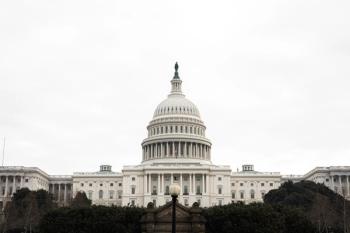
CMS is Leading the Way Toward Bundled Payments. Should It Be?
Bundled payments are an important part of the value-based care movement. But who is taking the lead on getting them implemented?
Before he became head of the Department of Health & Human Services (HHS), Tom Price, MD, said the architects of a planned mandatory bundled payments program were “experimenting with Americans’ health.” In 2016, CMS, the most robust arm of the department, had issued such a plan, which required certain cardiac and orthopedic interventions to be performed within parameters designed to level outcomes and mitigate costs. It was exactly what Price did not want to see. He resigned before he could undo the program but delayed its implementation before it was canceled last December. In its place rose a similar initiative, comparable with the first in almost every way save for the inclusion of a few outpatient procedures and the nature of participation: The new Bundled Payments for Care Improvement Advanced (BPCI Advanced) plan, unveiled in January 2018, is entirely voluntary.
A day before, JAMA published a study examining voluntary bundled payment pilot programs. Although some produced stellar results—previous work showed an average savings that exceeded $1000 per joint replacement with outcomes unchanged—they also struggle to get off the ground. Only 12% of eligible hospitals joined, almost all of which were in cities. The programs also suffered attrition: More than half of hospitals had abandoned the program in some way, and a fifth stopped participating altogether.
CMS has not given up on bundled payments. They are a key element in the value-based care movement: pay for a total episode of care as a single unit (instead of a series of procedures and visits) while maintaining positive outcomes. The federal government has been the key driver.
The Oncology Care Model (OCM) is another example of CMS’ commitment to bundles. It was born as a vital element of the Center for Medicare and Medicaid Innovation, itself a product of the Affordable Care Act (ACA). Bundled payments are less discussed parts of the ACA, but they are designed to make the law work. The bill expanded Medicare expenditures, and it included provisions to try to get more from that money.
The OCM is also voluntary and, according to experts who spoke to Healthcare Analytics News™ (HCA), is respected enough to be safe from administrative changes at HHS and CMS. The same experts also said, however, that cancer is far more complex and expensive to treat through bundled care than open-and-shut procedures like knee replacements. Some top cancer centers have paired with analytics firms to explore their own bundled payment programs as a way of remaining on the cutting edge while competing for patients, but those programs are sparse and young.
All things considered, CMS has emerged as the primary driver of bundled payments. The questions, then, are how it can best proceed and whether it should be the key force behind this aspect of the value-based care movement.
The irony of Price’s objection to mandatory payment bundles—that they are “experiments”—is the reason why many in healthcare like them. Doctors are scientists, and scientists experiment. “The beauty of the mandatory bundle for joint and cardiac procedures is that you basically have a randomized trial where you can see [whether] bundles increase the volume of procedures, [whether] hospitals are able to save money, and [whether] quality is maintained,” Ezekiel Emanuel, MD, told HCA in an interview. “You get real data.”
Emanuel, the founding chair of the Department of Bioethics at the National Institutes of Health and vice provost for global initiatives at the University of Pennsylvania, takes credit for working behind the scenes to launch the OCM, and he has also published studies and opinion letters regarding the efficacy of the joint replacement bundles.
“What happens with voluntary?” he asked. “Who is going to participate? Someone who thinks they’re going to succeed. It’s not a random sample, and it doesn’t get those people who are sitting on the sidelines waiting, the [major for-profit health systems]. You’ve got to get those people to play the game.”
To Amol Navathe, MD, PhD, that self-selection problem is troubling. A colleague of Emanuel’s at the University of Pennsylvania, the healthcare economist has studied bundled payments for years. Hospitals that choose to participate in bundled payment programs are most often high-volume, nonprofit, and urban. Few safety-net or for-profit hospitals have done the same.
What he finds interesting about that breakdown is that in earlier mandatory pilot programs like the Comprehensive Joint Replacement program that preceded CMS’ voluntary bundles, some reluctant hospitals likely benefited. Nearly half of the hospitals that his group studied in that program earned savings.
“There [must] be participant hospitals in there that wouldn’t have volunteered and yet achieved savings while hitting quality targets,” he said. “Mandatory programs are much better for getting broad participation that impacts more beneficiaries and are better at producing robust evidence.” On the other hand, some hospitals cannot make the programs work, he said.
Darcie Hurteau, MBA, is more lenient with BPCI Advanced. She’s the senior director of informatics for DataGen, a healthcare analytics and policy firm helping health systems with new payment models. She thinks providers who participated in the first BPCI would have pursued many of the practices within the program on their own and that the new form will allow them to join a proven system. Over time, more may gravitate toward the models, which could undo some of the skew toward urban and nonprofit centers.
“You’re not going to shift this paradigm overnight. It’s going to take a while. You need to get all players involved at the point that makes sense for them,” she said.
The Success Story
The OCM has received more attention than similar models for other conditions and generated more enthusiasm among providers.
“The joint bundles got a lot of flak from orthopedists. That’s not the case here so much,” Michael Kolodziej, MD, said. “The only flak I think [OCM has] gotten from oncologists was that the inclusion criteria were too strict.” Participating hospitals wish they could enroll more patients in them, he said.
Kolodziej is a veteran in the value-based care and analytics worlds who is now chief innovation officer at the advisory firm ADVI Health. Unlike other specialties, oncology has characteristics that make it more fertile ground for bundled payment programs, he explained. Far more oncologists work in independent community practice settings compared with other specialties. Those doctors are more willing to engage in programs that promise to bring down costs to remain competitive. A cardiologist in a large health system is shielded from that.
Even so, cancer treatment is far more intricate than joint replacement. Designing the bundles is difficult, from determining the targeted types and stages of cancer to budgeting to defining a “quality outcome,” he said.
With the rate at which oncologic breakthroughs occur, a novel therapy may go from unknown to standard-of-care in 6 months, said Brenton Fargnoli, MD, Flatiron Health’s medical director of value-based care and director of product marketing and strategy. And as those therapies can be prohibitively expensive, it would be immoral to deprive a patient of them to adhere to a bundle plan, he said.
Then there is cancer. “There are certain types and subtypes of cancer that are more amenable to model development,” Fargnoli said. “Community oncologists will see all types of cancer patients, so they don’t want to be operating on vastly different payment models depending on which patient is walking through the door.”
Navathe said variability makes the OCM a “huge and ambitious model,” and it’s less defined than the joint and cardiac bundled plans, voluntary or mandatory.
Though every practice in the program is there by choice, Kolodziej does not think they will all be satisfied. The program has many moving parts, even if it is broad.
“What we’re starting to see is that the government is the government,” he said. “Things have been made very complicated, and there are a lot of rules and fancy equations, and I think people are a little bit frustrated by that stuff. The quality measure submission was painful; the registry submission was painful.”
Where Is the Private Sector?
Kolodziej thinks CMS deserves a lot of credit for its efforts. Navathe said “the catalyst potential of CMS cannot be understated.” Emanuel and Fargnoli have both worked on OCM initiatives. Hurteau credited the agency with taking the lead and being responsive to the industry.
But CMS can’t go it alone. “If all you end up with is Medicare on the bundles, that’s not going to be helpful,” Emanuel said. For bundled payments to succeed, other healthcare stakeholders will need to become more proactive.
Advancing bundles outside CMS will not be easy. Programs exist—John Theurer Cancer Center of Hackensack Meridian Health in New Jersey is working to develop one, and The University of Texas MD Anderson Cancer Center paired with UnitedHealth to pilot another—but those efforts are scattered. Kolodziej hasn’t see one take off.
In a perfect world, the march should be led by those who can benefit most, experts said. “Ultimately, it’s the patients’ outcomes, their health, and their life,” Fargnoli said, “and the physicians treating them are closest to this.” Doctors are the face of healthcare to the average patient, and they must embrace the bundles and explain them to patients to create demand. Awareness is lacking.
“I wish I could say that the patients are really going to lead this charge, but it’s really the payers,” Navathe said. Large employers with thousands on their insurance rolls, such as Boeing and Walmart, can put pressure on private payers. Walmart sends its patients who need bypass surgeries to Cleveland Clinic through a bundled arrangement, for example, to keep things simple and bring costs down.

















































